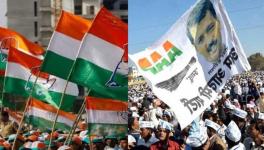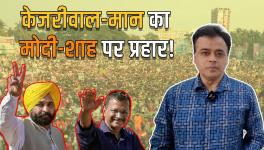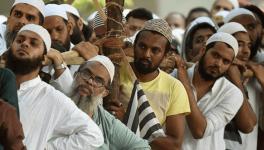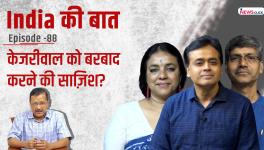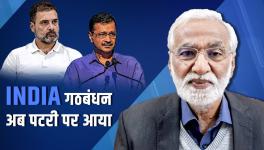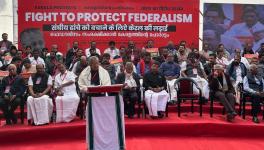Why Punjab did not Deliver a Hung Verdict
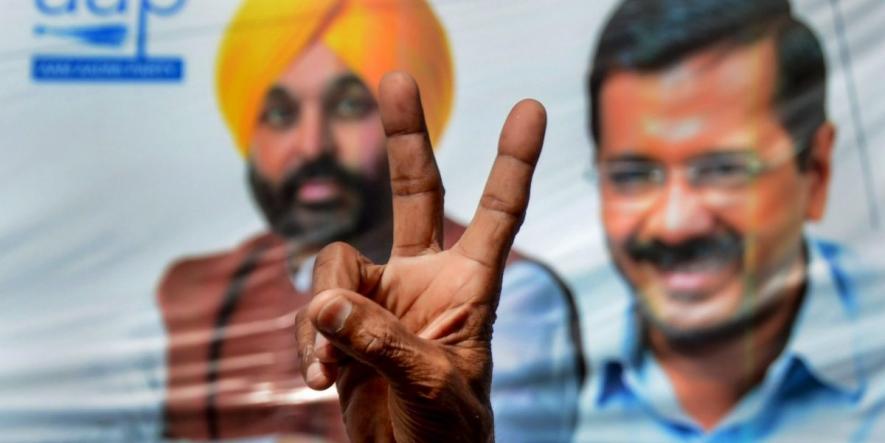
Image credit: The Wire
I am constantly reminded of a couplet of Hindustani poet Dushyant Kumar, which can serve as a fitting analogy for the outcome of the Punjab polls. It goes like this: ‘Kayin fankey bitaa ke marr gaya jo, uske bare mein/Woh sab kehtey hain ab, aisey nahin, aisey hua hoga.’ The lines translate roughly as, a man has perished of hunger, and still, people are guessing why he has died.
The Aam Aadmi Party’s (AAP) victory in Punjab has engaged many social scientists and journalists, who have shared a considerable number of explanations for this win. Clearly, all the typical social factors such as caste, region, and religion (in the form of deras) proved non-functional in the Punjab election result. The release of Gurmeet Ram Rahim of the Dera Sacha Sauda on parole convincingly proved ineffective in influencing the outcome of this election. So, one wonders what made AAP win so convincingly.
A long time ago, Bertrand Russell had said no regime could survive without the support of the middle class, but we cannot apply this maxim to the Indian situation, where a majority of the population lives below the middle-class status. Money and liquor, which are prevalent factors in elections, also did not work: Some sections got both but did not vote for their usual political choices. Thus the question remains: how did this happen?
Although I maintain that every election is an autonomous event, yet, instead of examining the patterns of victories, it is essential to explore the more significant issues that capture the voters’ minds. We can begin with the 2019 Lok Sabha election, in which the Bharatiya Janata Party (BJP) emerged as the majority party for the first time within the National Democratic Alliance. Even after the Pulwama episode, nobody expected that outcome. In the present election in Uttar Pradesh too, the Samajwadi Party seemed to be gaining tremendous ground, and many were hopeful of its victory. We find parallels between the Bihar election in which Tejashwi Yadav and the Rashtriya Janta Dal (RJD) seemed to be emerging forcefully. The young leaders of the Samajwadi Party and RJD have shown eloquence and ability that attracted crowds, but they failed to transform it into votes.
2022 would be recorded in Indian history as the year the BJP successfully convinced the people of Uttar Pradesh that inflation and unreasonable taxes on petroleum products and edible oils are good for the country, as the proceeds would be used for welfare. This is an unparalleled phenomenon among the supporters of any other political party. Moreover, free vaccination and free rations were used as propaganda to convince people that the party in power had its heart with the people. It is a classic example of Antonio Gramsci’s concept of hegemony, according to which a ruling party controls the consciousness of the masses (despite narrow victory margins in many constituencies).
Returning to Punjab, its people had been trapped in the competition between two parties which, more or less, alternated between coming to power and taking the Opposition benches. Interestingly, their matches in Punjab would not gain the intensity we saw in Uttar Pradesh. No matter which party came to power in Punjab, it never did anything innovative to try and cement its place in power permanently. The underlying reason was both counted on each other’s follies to return to power.
The system continued, and there was no way out of its trap. Over time, many parties lost their niche in the electoral politics of Punjab, such as the socialists, communists, and the Bahujan Samaj Party. The BJP’s survival depended on its alliance with the Akalis and went no further. Thus, the AAP could make headway in the state in the 2014 Lok Sabha elections. At that time, it was not well-entrenched in Delhi. It was largely untested for its ability and commitment, so the support it got in Punjab surprised everybody. Four Members of Parliament were elected from AAP, all holding different perspectives and ideologies, which soon became apparent when they parted ways after the split in AAP in Delhi, which resulted in the formation of the Swaraj Abhiyan Party. After this tumultuous phase, the only man standing by AAP was Bhagwant Mann, the new chief minister of Punjab.
The popularity test of the AAP in Punjab was in the 2017 Assembly election when, riding a tide of popularity, it became overconfident. It could not avoid committing errors that caused its defeat. In addition, the Akalis inadvertently helped the Congress party. Congress party rule under the leadership of Amarinder Singh proved the worst in the recent history of Punjab. Though his government got a reprieve due to the pandemic, Singh’s over-dependence on the bureaucracy—which was furthering the party’s agenda at the Centre—proved disastrous for him. In this age of information domination, Singh lost both prestige and legitimacy. When Navjot Singh Sidhu began his crusade against Amarinder, it was too late to save the Congress from a definite debacle. Add to this mix the incorrect choice for his replacement: The alleged involvement of his nephew in sand mining undid most of the theatrics.
Today, the AAP is in its third term in Delhi and has delivered much of its promises. It proved itself a worthy opponent of the BJP in communication strategies by using all kinds of rhetoric, including that of religion. However, more important for the people of Punjab was that it represented a third alternative. It offered them a chance to go for change for the second time, and they took it. If we recollect people’s responses to the AAP just before voting day, one thread emerged: They told journalists and others who asked that AAP should get a chance in Punjab, and they would give it this opportunity. Some added that this should have happened in 2017—as if they wished to absolve themselves from their earlier mistake.
The Punjab election is a classical case of perceptions. People wanted to emerge from the trap of existing political elites who have psychological similarities and kinship relations across party lines. They have done so wholeheartedly.
The author was professor of sociology at Guru Nanak Dev University, Amritsar, and is a former president of the Indian Sociological Society. The views are personal.
Get the latest reports & analysis with people's perspective on Protests, movements & deep analytical videos, discussions of the current affairs in your Telegram app. Subscribe to NewsClick's Telegram channel & get Real-Time updates on stories, as they get published on our website.










